It has become almost mandatory for all households to own a fridge to keep their preserved food fresh at all times. This useful home appliance is the most important of all appliances as it is always turned on, every minute of every day.
Refrigerators, especially older models, tend to consume a lot of electricity. In this article, we’ll talk about how to reduce your fridge power consumption. Doing so will not only help you save money in the long run but also benefits the environment. Keep reading to find out more about how you can increase your refrigerator’s energy efficiency.
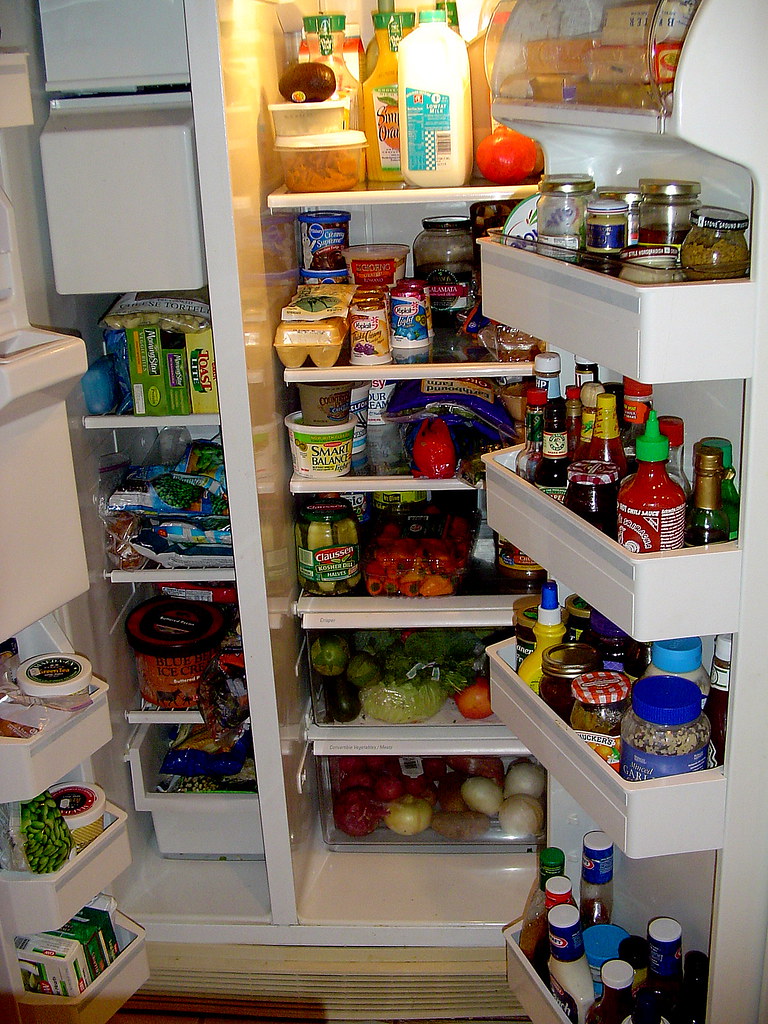
An overstocked fridge
How to Find out Power Consumption
Fridges run for 24 hours a day and take up about 50% of our total household power consumption. For example, your daily consumption is 6 units, the fridge alone takes 3 units. Of course, more energy-efficient refrigerators consume less power in a day.
How do you find out how much power your fridge consumes?
1. Check refrigerator wattage
If you’re wondering how many watts does a refrigerator use, then you’ve come to the right place. The refrigerator wattage for a regular domestic fridge ranges between 100 and 250 watts.
If your refrigerator wattage is 150 watts, here’s how you calculate:
1. Estimated usage – 8 hours (33% duty cycle)
2. Total energy – 150 W X 8hours = 1,200Wh =1.2kWh/day
3. Total cost – 1.2kWh/day x 365 days x $0.25/kWh = $109.5/year
The running cost per year is around $110 for the fridge.
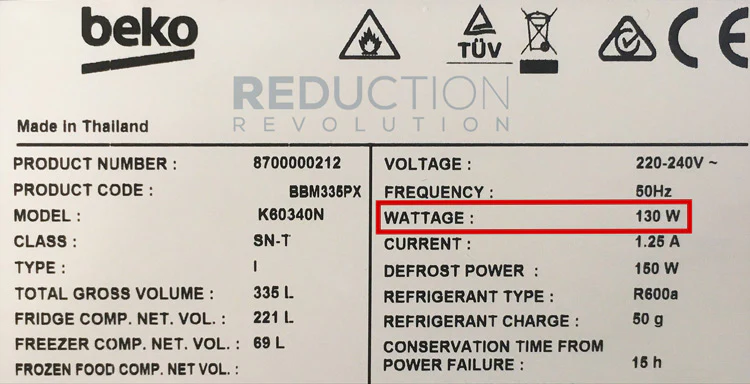
The refrigerator wattage is often indicated on the device
2. Approximate calculation
Just because your fridge runs throughout the day, that doesn’t mean that you can’t reduce the amount of electricity it consumes. You can approximate this easily.
1. To start, note the meter readings.
2. Then wait for 24 hours before taking the second reading
3. The difference shows you the total units consumed in a day by all appliances
4. Unplug the fridge but leave other appliances as usual
5. Take the readings after 24 hours
6. The difference between reading in step 2 and the reading in step 5 is your fridge power consumption
3. Use an online Energy Usage Calculator
Before you can start bragging that you know exactly how much power your fridge uses, sorry to say that it’s not that simple – well, unless you’re using a refrigerator power consumption calculator.
To use the energy usage calculator, you’ll need to have different figures including the average power use of the device in watts, the cost you pay per kilowatt-hour, and an average of how many hours the fridge is used daily.
Keep in mind that this energy usage calculator doesn’t account for compressor cycles and other factors that can drastically increase or decrease power usage.
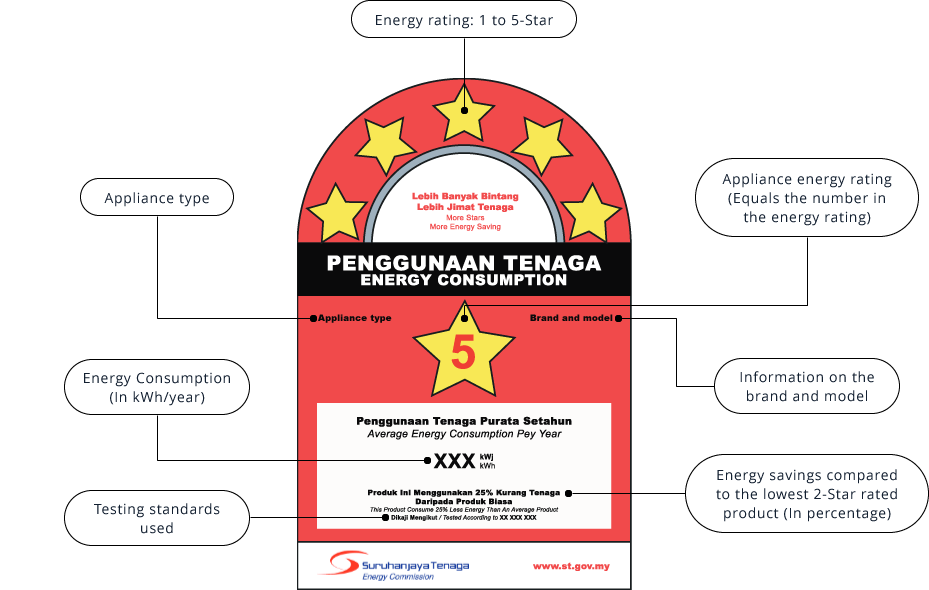
Understand how to calculate your appliance energy use
4. Invest in an electricity usage monitor
An electricity usage monitor will give you correct figures of how much power your refrigerator uses in a month. The monitor will also tell you for how many hours in a day the fridge draws power. For example, a 100W fridge draws power for about 6 hours in 24 hours.
From this monitor, you can easily tell which home appliances significantly impact your electricity bill. With this device, you can enjoy the benefit of measuring accurately rather than estimating.
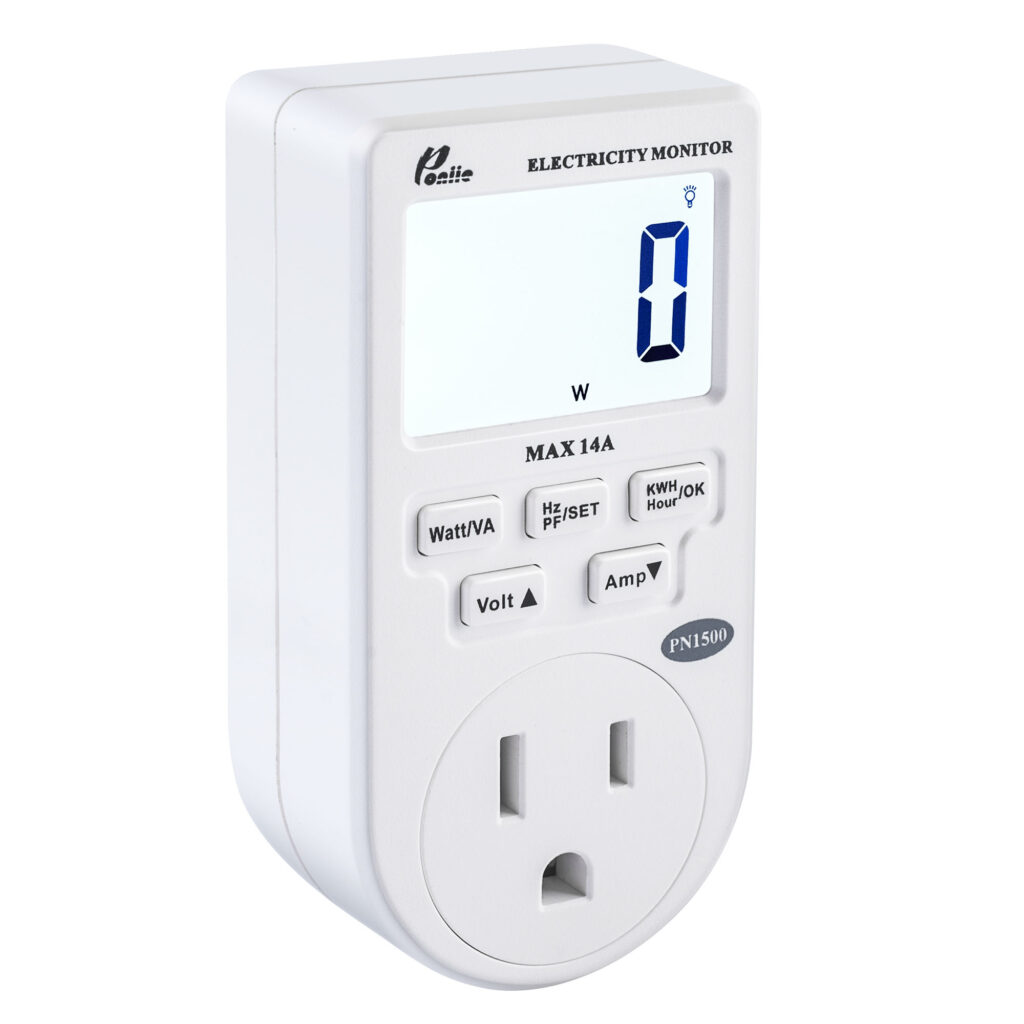
A simple plug-in electricity usage meter
What Affects My Fridge’s Power Consumption?
All refrigerators have a way of monitoring their internal temperature and controlling how cold air is distributed. When a fridge is not working properly, it struggles to maintain a low temperature. Here’s a list of factors that affect refrigerator power consumption:
1. Model of fridge
The make and brand of the fridge greatly affect its technical characteristics. In short, how and when a manufacturer makes the fridge affects its energy consumption. For example, a modern refrigerator is more energy-efficient compared to a model that was made 15 years ago. Newer models come with advancements that enable them to save on power consumption.
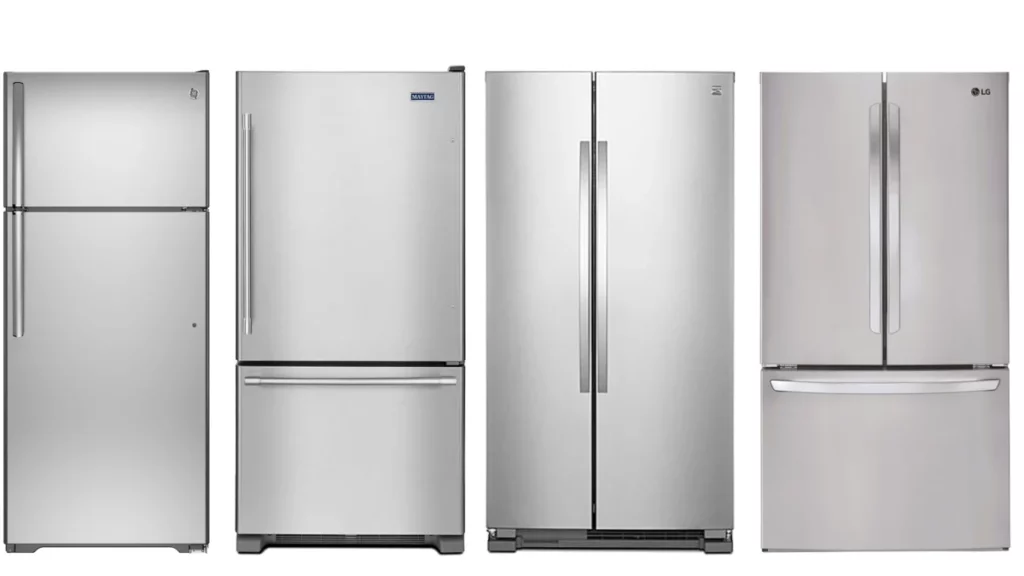
Refrigerators come in different shapes and sizes
Most traditional fridge models have parts like motors that malfunction meaning that they don’t cool air whenever they’re required to. This reduces the unit’s cooling ability and increases its consumption.
Find a model that doesn’t need to work overtime to keep food cold.
2. Energy Star Rating
This second point is quite obvious, we believe. If you are looking to purchase a new refrigerator, find one with a good star rating. However, keep in mind that energy-efficient refrigerators are a little costlier but they have a lower power consumption. At the end of the day, it’ll cost you a lot less to run such a unit.
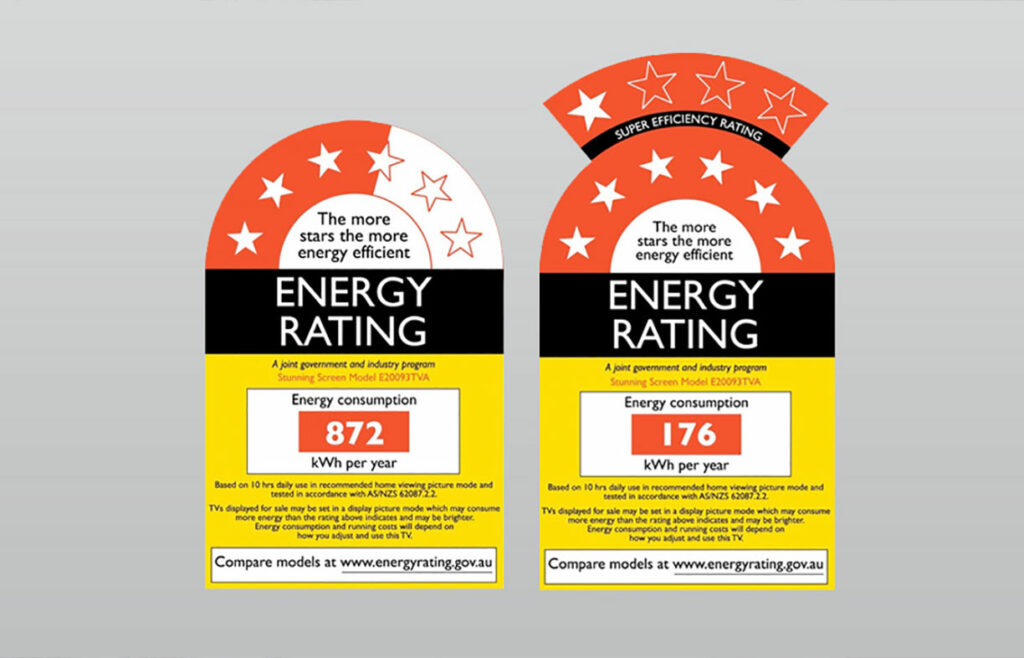
Example of energy efficiency label. The more the stars, the more the savings
Refrigerators have come a long way in terms of energy efficiency. Overall, frost-free models with the top or bottom fridges are generally more energy-efficient than multi-door fridges.
If your refrigerator is costing you more than an average fridge does, you should consider getting an upgrade.
3. Frequency of opening fridge door
Keep your refrigerator door closed and open it as few times as possible and for the shortest time if you wish to reduce your energy usage. When you keep opening your fridge, this will have a huge impact on your energy bill because every time you open it, cold air escapes and so lots of energy will be used to return the new warm air to the required temperature after the door is closed.
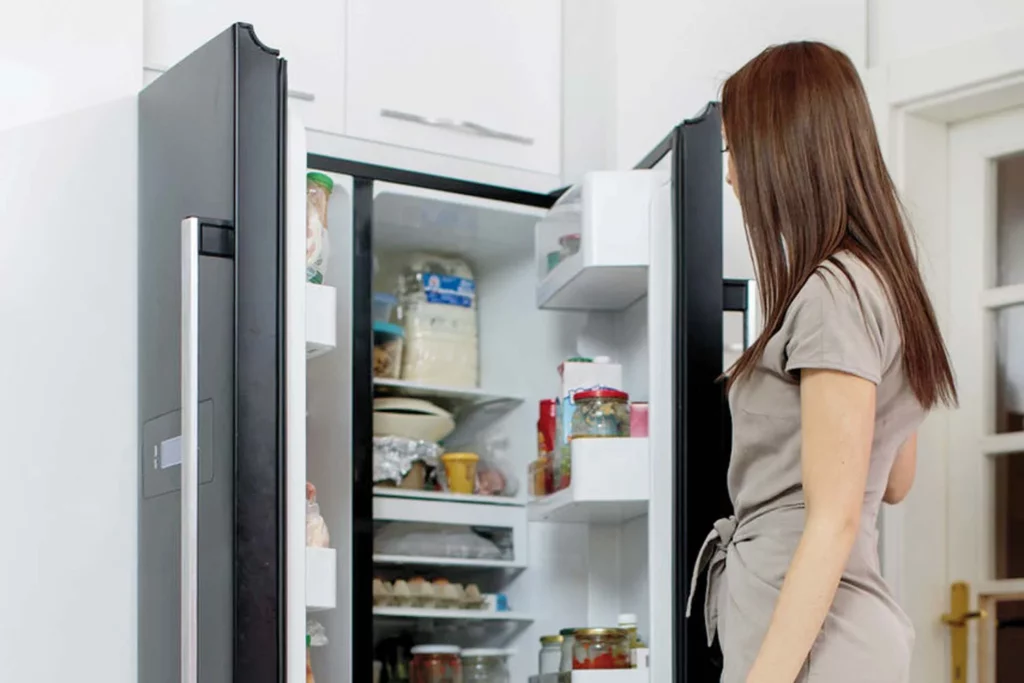
Minimize the frequency of opening your refrigerator
It helps a lot to first decide exactly what you want before opening the fridge or freezer. This shortens the time that you’ll keep the door open trying to figure out what you need to get out. The secret here is to keep your food well-organized so you don’t have to waste time “hunting” for what you want. Get rid of all the clutter that might trap air inside, forcing the compressor to work extra hard and costing you money in the long run.
4. Use of fridge capacity
Be careful not to jam your fridge with lots of food. Doing this limits the space left for air to circulate. When air circulation is inhibited, it takes longer for the air inside the fridge to cool. Some foods become too cold and may even freeze while other foods aren’t kept cold enough for proper preservation. Remember that we don’t mean that you should store only a few items inside a fridge. On the contrary, refrigerators work most efficiently when they’re full (but not too full).
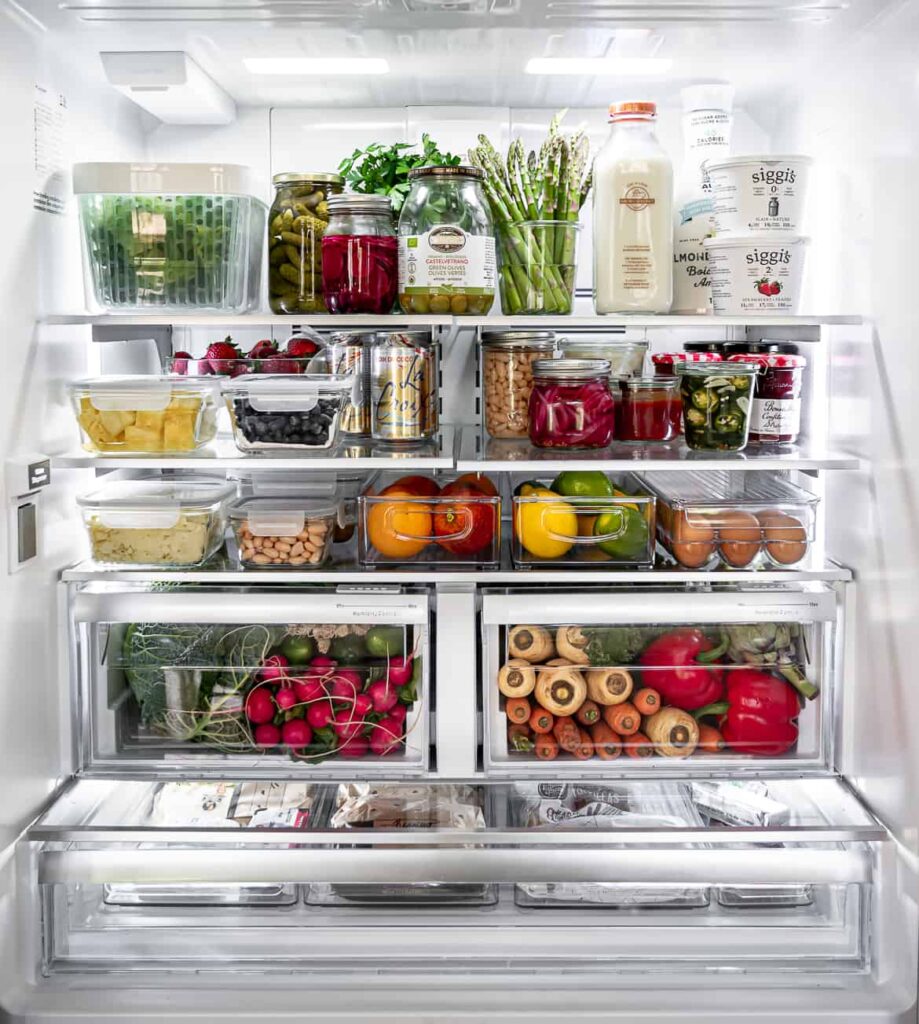
Always keep your fridge organized
A well-stocked fridge is easier to keep cool than an empty one. The science behind this is that there’s less air to cool when space is taken up. Purpose to keep the fridge about ¾ full at all times to avoid overcrowding. Full freezers also keep food frozen for longer when there’s a power outage.
Remember that the type of food you store in your fridge and how you store it also affect the amount of energy consumed.
5. Ventilation
Ensure that your fridge is in a well-aerated room especially for built-in refrigerators. If the room doesn’t have proper ventilation, it causes the appliance’s compressor to work extra hard to maintain cool temperatures.
Ideally, a fridge should be placed at least 30cm away from the wall. Otherwise, you’ll experience lots of breakdowns and increase energy consumption due to overheating.
If you have versatile space, you can move your refrigerator to the right spot. If it’s not a feasible option for your kitchen maybe due to its small size, you can consider remodeling or moving houses.
6. Surrounding temperature
Your refrigerator shouldn’t be placed in direct sunlight. You should also keep it away from any external sources of heat. Some appliances that may increase the surrounding room temperature include the stove oven, microwave, dishwasher, heater, etc. The compressor kicks into high gear when it’s near sources of heat. This shortens the unit’s lifespan and also wastes a lot of energy.
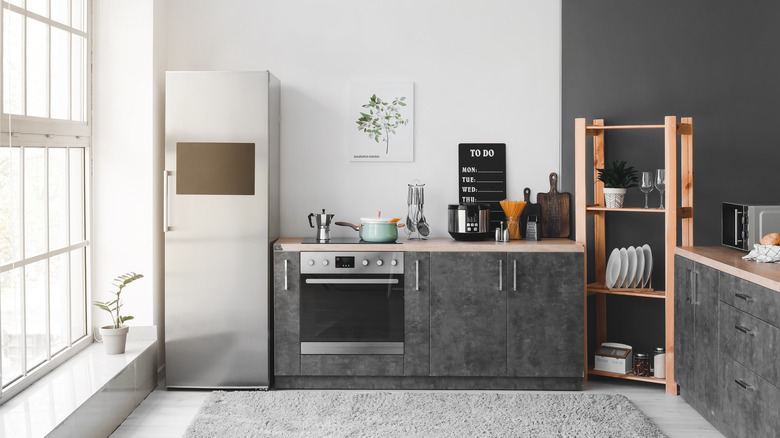
Avoid placing your fridge in the path of direct sunlight
If you place a bunch of stuff on top and at the sides of the fridge, it will have to work harder to get rid of the hot air that is created by the cooling process.
If the fridge is kept at the right temperature, it works more easily and ultimately uses less electricity.
7. Refrigerator door seals/gaskets
The door seals on a refrigerator are also referred to as gaskets. They prevent unwanted warm air from getting in and cold air from escaping. These rubber seals play a very important role in the smooth and efficient functioning of a refrigerator. Most people don’t realize this and can easily overlook the importance of these plastic linings.
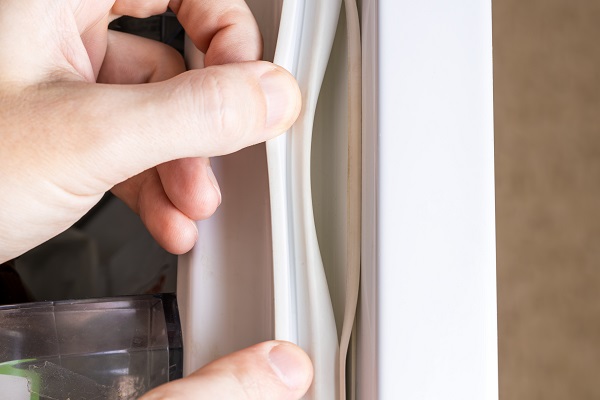
Replace your gaskets once they wear out
Sometimes the gaskets wear out and as a result, the suction is lost. This usually happens after years of use, with constant opening and closing of the fridge. The refrigerator works in overdrive as it strives to keep the food cold. This translates to high energy bills which might leave a dent in your pocket if the problem is not fixed.
Does the Refrigerator Inverter Affect Power Consumption?
Yes. Inverter technology positively affects power consumption. It cuts down electricity consumption by maintaining a constant temperature, to keep food in the best possible condition, without using a lot of energy. These refrigerators are adaptable and can be used in a way that best suits your needs in the best possible way. In simple terms, they can work faster or slower according to your preferences. Once the preferred temperature has been achieved, the fridge operates at a reduced speed to maintain it.
Refrigerators with inverter technology consume less power than normal refrigerators with non-inverter compressors. The latter only has an on-off function which consumes a lot of energy in startup and shutdown. As a result, the energy star rating of inverter refrigerators is more efficient than their counterparts with the same capacity.
Inverter technology is fast becoming the standard for modern home refrigerators. This is because not only are they cost-saving but also less noisy. Since they work constantly without needing to power on and off. Managing their speed makes sure that no noise is produced.
How Can I Reduce the Power Consumption of My Fridge?
In a basic household, the refrigerator is the biggest energy guzzler so if you’re looking to reduce your overall power consumption, the fridge is the one appliance that you should focus on. How can you make your refrigerator work optimally and still achieve energy efficiency? Here are some of the ways you can reduce the power consumption of your fridge:
1. Reduce frequency of door opening
When you frequently open your refrigerator, especially for long periods, the cool air escapes, and warm air gets in. The fridge will then have to up its work rate to get things cool again. This gets worse when you take a moment to decide what you need from the fridge when the door is still open. Decide what you want in advance, open the door, pick your food/snack/ingredients, and close the door as soon as you can.
Reduce opening the fridge door all the time to avoid putting stress on the appliance.
2. Choose fridge with door alarm
The longer a refrigerator is left open, the more the impact will be on the electricity bill. Leaving your fridge door open by mistake significantly increases the power consumption and affects the life of the fridge. This is a common occurrence when you have kids who don’t take time to double-check whether the door closed properly or not.
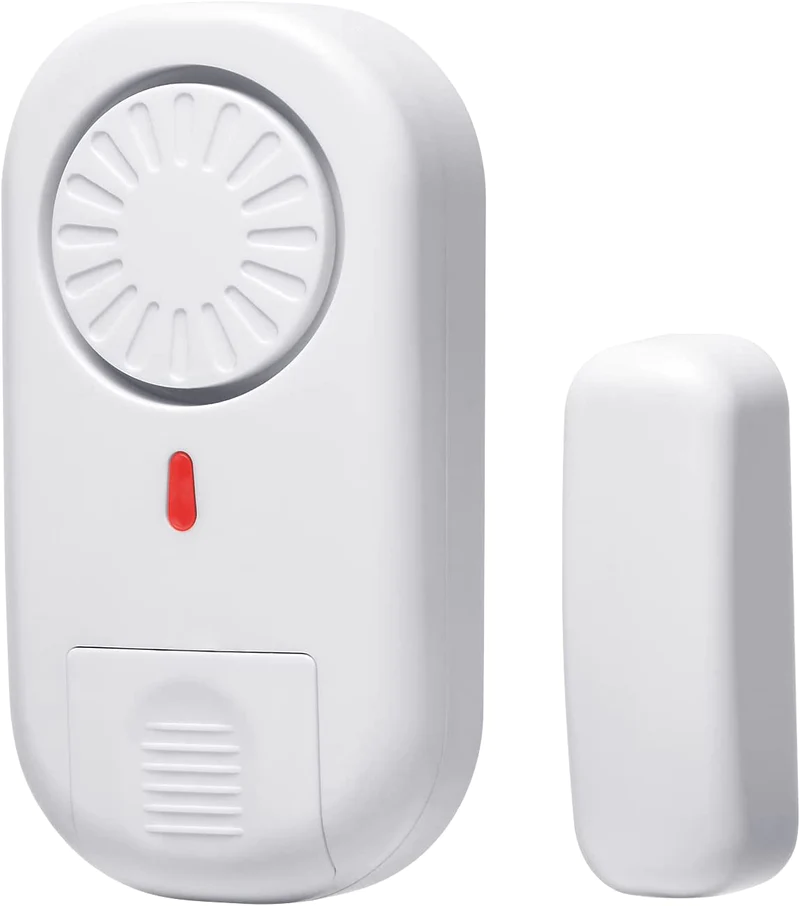
A refrigerator with a door alarm
That is where a refrigerator door alarm comes in. These systems alert you when the door is left open for long periods. It can detect when the refrigerator’s interior is becoming too warm for the preservation of perishable foods.
3. Ensure fridge has proper ventilation space
Refrigerators just like other household appliances need a cool place to function and enough room to breathe. Where you position your refrigerator greatly impacts how well it works. You should ensure that it is as far away as possible from the walls.
Allow at least 10cm of free space around the sides for proper ventilation. Otherwise, the refrigerator can’t release the heat from the compressor and causes it to heat up.
4. Don’t set fridge next to a hot appliance like an oven
Direct sunlight is not good for refrigerators so you should strategically position them away from windows. Again, placing the unit next to other appliances that produce heat like ovens makes it work a lot harder to maintain cool temperatures.
Move the refrigerator to cooler locations to not only promote proper air circulation but also maximize its use.
5. Don’t put hot food inside immediately. Allow it to cool first
When hot foods are placed inside a fridge, they cause the temperature of the air inside to rise and this requires extra energy to reduce the temperature. The more work a refrigerator has to do, the more energy it will use.
To avoid unnecessary power consumption, you should always wait for leftover food to cool down naturally before placing it inside a refrigerator. You should, however, not let your food sit outside for too long as it may spoil.
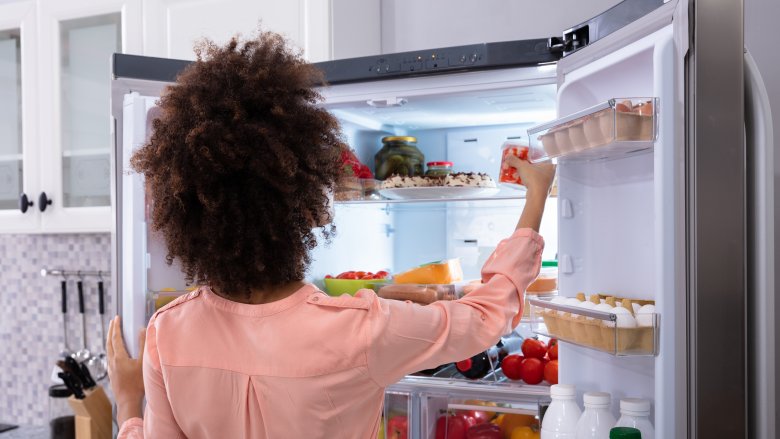
Hot food going in a refrigerator
6. Clean and repair door seals/gaskets
Refrigerator door seals act as a tight barrier preventing the cold inside and warm outside air from mixing. Faulty door seals are the main culprit for energy loss in refrigerators.
To check whether your seals are defective or not, place a dollar bill on the door as you close it. If it’s firmly held in place it means that they’re functional. On the other hand, if the money falls off you’ll need to find a professional to replace the seals.
7. Clean condenser coils periodically
The condenser coils are found on the back or underside of the refrigerator and remove warmth from it. When dust and dirt accumulate on the coils, it becomes difficult for them to radiate heat properly. Dirty condenser coils work twice as hard as they should and this leads to more power consumption. Eventually, the refrigerator starts having problems.
Invest in a bristle brush or handheld vacuum cleaner and use it to prevent the build-up that affects performance. Clean the condenser coils at least twice annually.
Suggestions of available models with high energy efficiency → low power consumption
Energy-efficient refrigerators have reduced power consumption. A refrigerator with a good energy star rating doesn’t necessarily have to cost you thousands of dollars but will surely help you save up on your electricity bill.
If you’re planning to buy a refrigerator and don’t know which one is best for you, here are two options you should put into consideration;
1. Samsung RS54N3003SL 566L / RS62R5031SL 680L Side By Side Inverter Refrigerator
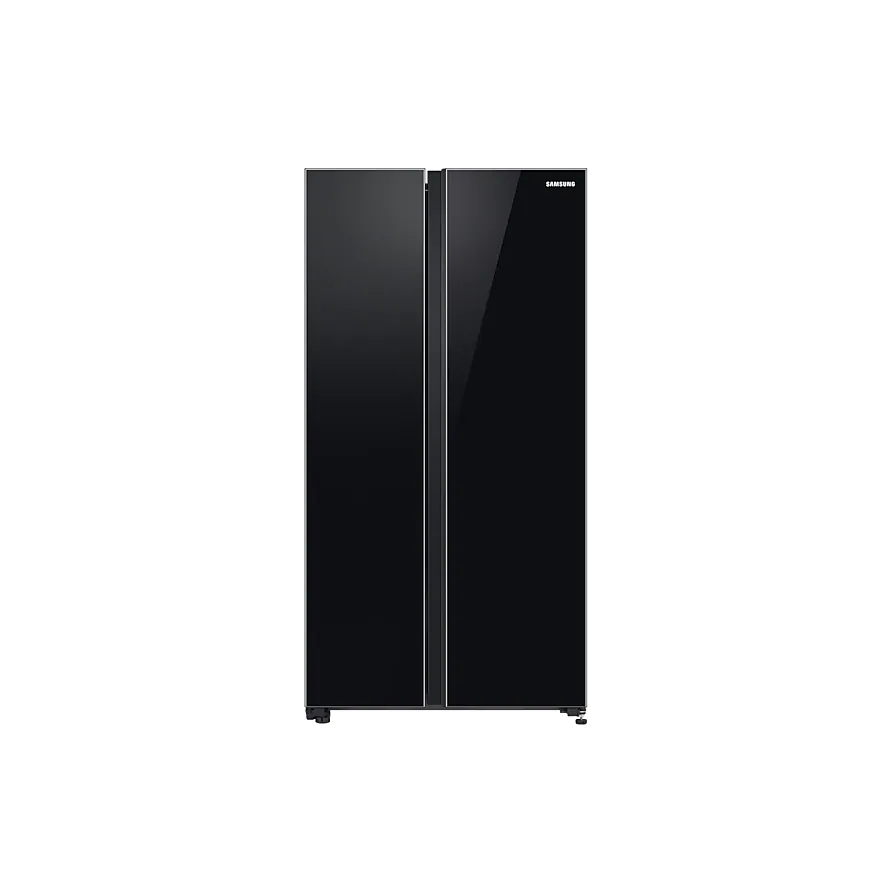
The Samsung RS54N3003SL 566L / RS62R5031SL 680L Side By Side Inverter Refrigerator
strikes the perfect balance between usability and energy efficiency. This 566L side-by-side refrigerator has flexible shelving allowing for a large amount of space so it can store a lot of food. The digital inverter technology offers up to 50% energy saving resulting in low energy costs.
Pros
· Energy efficient
· Large capacity – Ideal for large families
· Doors need less room to swing open
Cons
· Quite costly
· Not suitable for small kitchens
2. Hitachi Inverter 2 Door Refrigerator (253 L) R-H275P7M Bbk
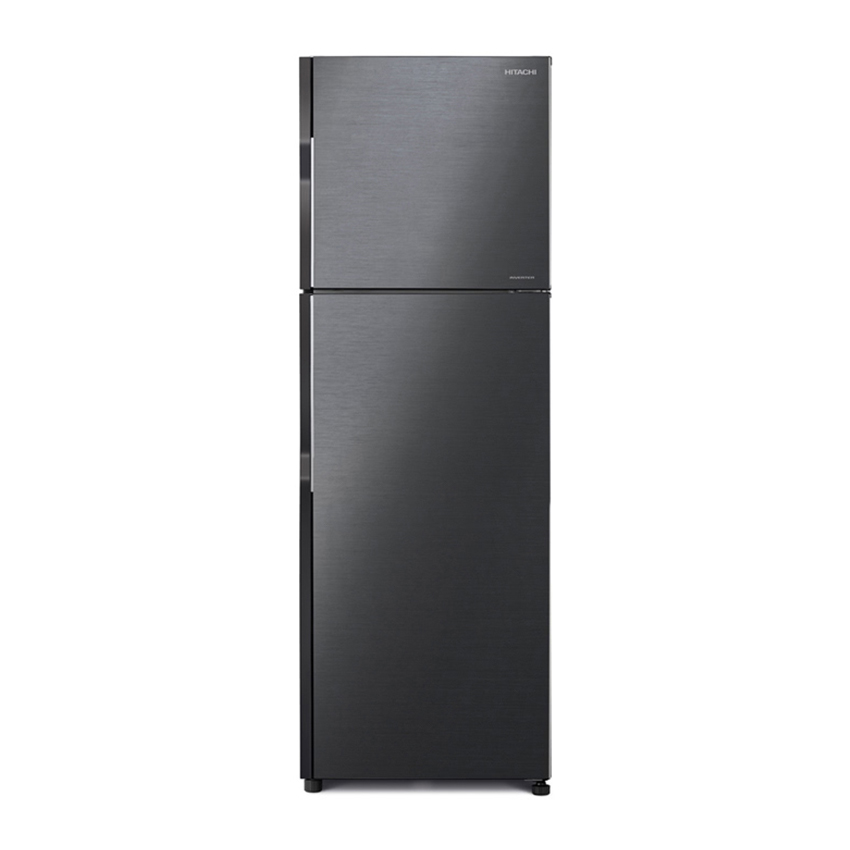
As you might expect, the Hitachi Inverter 2 Door Refrigerator (253 L) R-H275P7M Bbk offers solid performance, reliability, and guaranteed owner satisfaction. This no frost refrigerator in brilliant black is fully covered by manufacturer warranty.
Pros
· Affordable
· Energy efficient
· Can fit well in a tight kitchen
Cons
· Limited capacity – Not ideal for large families
· Wide platters and pots may not fit well
Frequently Asked Questions
1. How much power does a fridge use?
The amount of power a fridge consumes depends on the model and efficiency rating. An average number for domestic fridges would be 150 watt-hours a day. In a month it adds up to 36 kWh. This translates to an annual running cost of around $150 per fridge.
2. Does a fridge consume a lot of electricity?
Refrigerators are probably the only electrical appliance that remains switched on non-stop. This means that these appliances take up about 50% of the total electricity consumed in a household in a day. So yes, both traditional and modern energy star-type fridges consume lots of electricity and can pretty much be a cost burden for households.
3. Does the inverter fridge really save electricity?
The short answer is yes. Inverter technology is the most energy-efficient fridge technology in the market. This technology runs more consistently and at controlled speeds so the wear and tear are significantly reduced. This enables them to last longer and save up to 50% of electricity consumed.
4. Can I turn off my refrigerator at night?
No. When you turn it foo and back on, you make the compressor work harder than it should and this will most probably shorten its life. Again, when you switch off your fridge there’s a high risk that the preserved food will go bad a lot faster.
5. What can I do right now to reduce the power consumption of my refrigerator?
If your fridge has a power-saving setting, put it to use to reduce energy consumption. Even though not all refrigerators are equipped with this feature, most modern ones have it.
Also, some fridges come with three different temperature adjustments i.e. normal, cold, and summer. Set the knob accordingly to avoid unnecessary wastage of power.
Conclusion
As previously mentioned, refrigerators are the biggest electricity consumers in most households. On the brighter side, you can conserve energy and save yourself the headache of having to pay huge electricity bills.
By simply following the guidelines we have given you above, you can expect that your refrigerator’s energy efficiency will improve and its lifespan will be extended. Generally, one of the easiest ways to do all this is to try and keep your fridge Malaysia in a good condition. With proper maintenance, you can expect that the fridge will function optimally, and for long. If you’re planning on purchasing a fridge, opt for one that has a good energy star rating.




